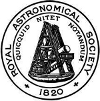Imaged substellar companions: not as eccentric as they appear? The effect of an unseen inner mass on derived orbits
- ↵★E-mail: tdpearce{at}ast.cam.ac.uk
- Accepted 2013 October 24.
- Received 2013 October 15.
- In original form 2013 August 28.
- First published online November 21, 2013.
Abstract
Increasing numbers of substellar companions are now being discovered via direct imaging. Orbital elements for some of these objects have been derived using star–companion astrometry, and several of these appear to have eccentricities significantly greater than zero. We show that stellar motion caused by an undetected inner body may result in the companion elements derived in such a way being incorrect, which could lead to an overestimation of the eccentricity. The magnitude of this effect is quantified in several regimes and we derive the maximum eccentricity error a third body could introduce in a general form, which may be easily applied to any imaged system. Criteria for identifying systems potentially susceptible to this scenario are presented, and we find that around half of the planets/companion brown dwarfs currently imaged could be liable to these errors when their orbital elements are derived. In particular, this effect could be relevant for systems within 100 pc with companions at >50 au, if they also harbour an unseen ∼10 MJ object at >10 au. We use the Fomalhaut system as an example and show that a 10 per cent error could be induced on the planet's eccentricity by an observationally allowed inner mass, which is similar in size to the current error from astrometry.
Key words
- © 2013 The Authors Published by Oxford University Press on behalf of the Royal Astronomical Society











